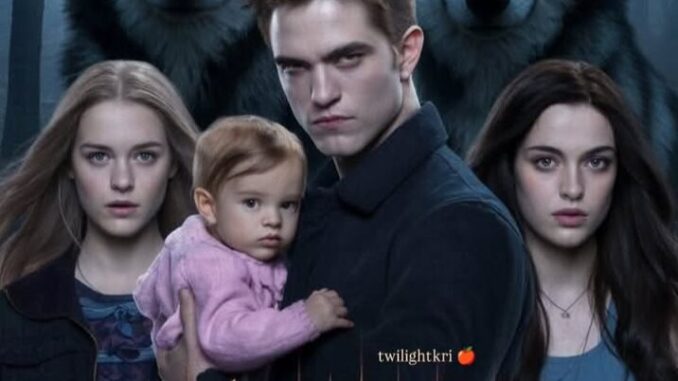
The Forest for the Trees: What to Expect from the New Twilight Adaptation
The mist-shrouded forests of Forks, Washington, have beckoned a generation, a siren call to forbidden love, supernatural intrigue, and the angst of adolescence. For a time, the Twilight Saga was an undeniable cultural phenomenon, its books flying off shelves and its cinematic adaptations igniting a fervor that bordered on religious. Now, years after Bella Swan embraced her eternal twilight, the announcement of a Twilight Saga reboot series has sent a ripple through the pop culture landscape. This isn’t merely a re-tread of familiar ground; it’s an opportunity, a chance to find the forest within the trees, to peel back the layers of mist and revisit a world often overshadowed by its own blinding spotlight.
To understand what to expect from this new adaptation is to first acknowledge why it’s happening now. The entertainment industry, ever-hungry for IP, thrives on reboots and reimaginations. But beyond the commercial imperative, Twilight itself, with its passionate fanbase and its equally vocal critics, holds a unique position. The original films, while wildly successful, were often constrained by runtime, budget, and the prevailing cinematic sensibilities of their era. They were, in many ways, a broad stroke painting of a deeply detailed world. The new series, presumably in an episodic format, offers the tantalizing prospect of a magnifying glass held to Stephanie Meyer’s universe, allowing narratives to unfurl like a slow, deliberate bloom.
One of the most compelling expectations is a deeper dive into character psychology and world-building. The original films, in their rush to move the plot forward, sometimes reduced characters to their archetypes. Bella’s often-criticized passivity could be re-contextualized as a more nuanced portrayal of teenage depression or the crushing weight of existential choices. Edward’s centuries of internal struggle, his predatory instincts warring with his burgeoning love, could be explored with an intensity beyond the longing glances. Jacob’s journey, from loyal friend to conflicted alpha, could be given the emotional space it deserves, delving into the Quileute mythology with greater respect and detail. Imagine entire episodes dedicated not just to the romance, but to the intricate political dance of the Volturi, the unique abilities and tragic backstories of the various vampire covens, or the subtle socio-economic fabric of Forks itself. The forest floor, previously hinted at, can now be fully illuminated.
Visually, the new adaptation has the potential to be a stunning re-imagining. Gone are the days of early-2000s CGI that occasionally rendered the supernatural less-than-sublime. Modern visual effects can imbue the glacial strength of vampires, the primal, bone-snapping shift of the wolves, and the very shimmer of Edward’s skin under the sun with a breathtaking realism. The Pacific Northwest, with its perpetual overcast skies and verdant, moss-draped landscapes, can become a character in itself – atmospheric, foreboding, and beautiful. We can expect a visual language that respects the melancholic beauty of the source material while elevating it with contemporary cinematic artistry, painting Forks not just as a setting, but as an integral participant in the unfolding drama.
Furthermore, the episodic nature will allow for a more faithful and expansive adaptation of the books’ intricacies. Meyer’s novels, particularly the later ones, are dense with subplots, internal monologues, and supporting character development that simply couldn’t make it into two-hour films. This series could finally give characters like Alice, Jasper, Carlisle, and Esme the room to breathe, showcasing their individual complexities and histories. Imagine arcs dedicated to the Denali coven’s grief, or a more thorough exploration of the ancient vampire laws that govern their existence. The slow burn of the romance, the gradual build-up of tension, and the intricate details of vampire and werewolf lore can be savored, allowing the audience to become truly immersed rather than simply propelled forward.
However, the reboot faces the formidable challenge of navigating fan expectations while adapting to modern sensibilities. The original saga, for all its charm, has been critiqued for perceived problematic elements, from the intensity of the love triangle to certain portrayals of gender dynamics. The new series will walk a tightrope, needing to respect the core romantic fantasy that enchanted millions, while perhaps subtly, or even overtly, re-contextualizing or evolving certain narrative threads. This doesn’t mean sanitizing the story, but rather exploring its complexities with a more mature lens, allowing characters to grapple with the consequences of their choices in a way that resonates with a contemporary audience. It’s about finding a balance between nostalgia and necessary evolution, proving that the beating heart of the story can endure without being stuck in amber.
In essence, the confirmed Twilight Saga reboot is not just another rehash; it’s an invitation to rediscover a world that captured imaginations, but perhaps wasn’t fully realized on screen. We should expect a series that is bolder in its visual scope, deeper in its character exploration, more expansive in its narrative ambition, and more thoughtful in its engagement with the themes that lie beneath the surface. It’s a chance for the new adaptation to step out of the original films’ long, romantic shadow and reveal a richly detailed, emotionally resonant story, finally allowing us to see the entire, magnificent forest, rather than just a few captivating trees.
